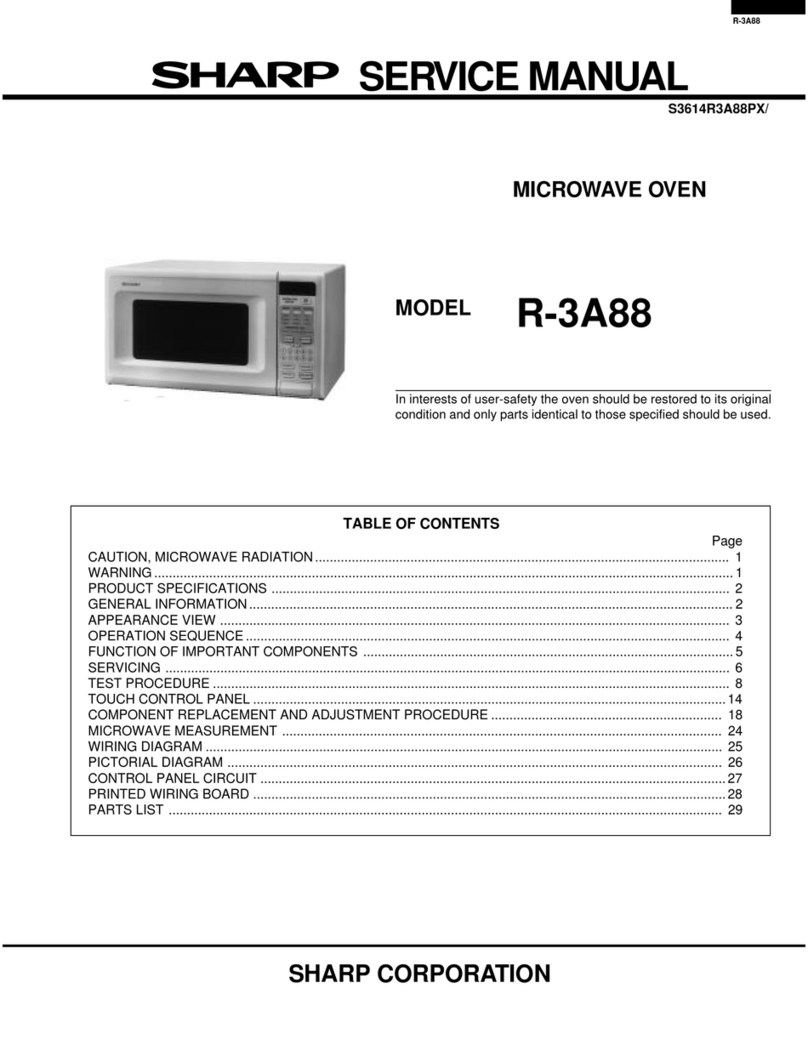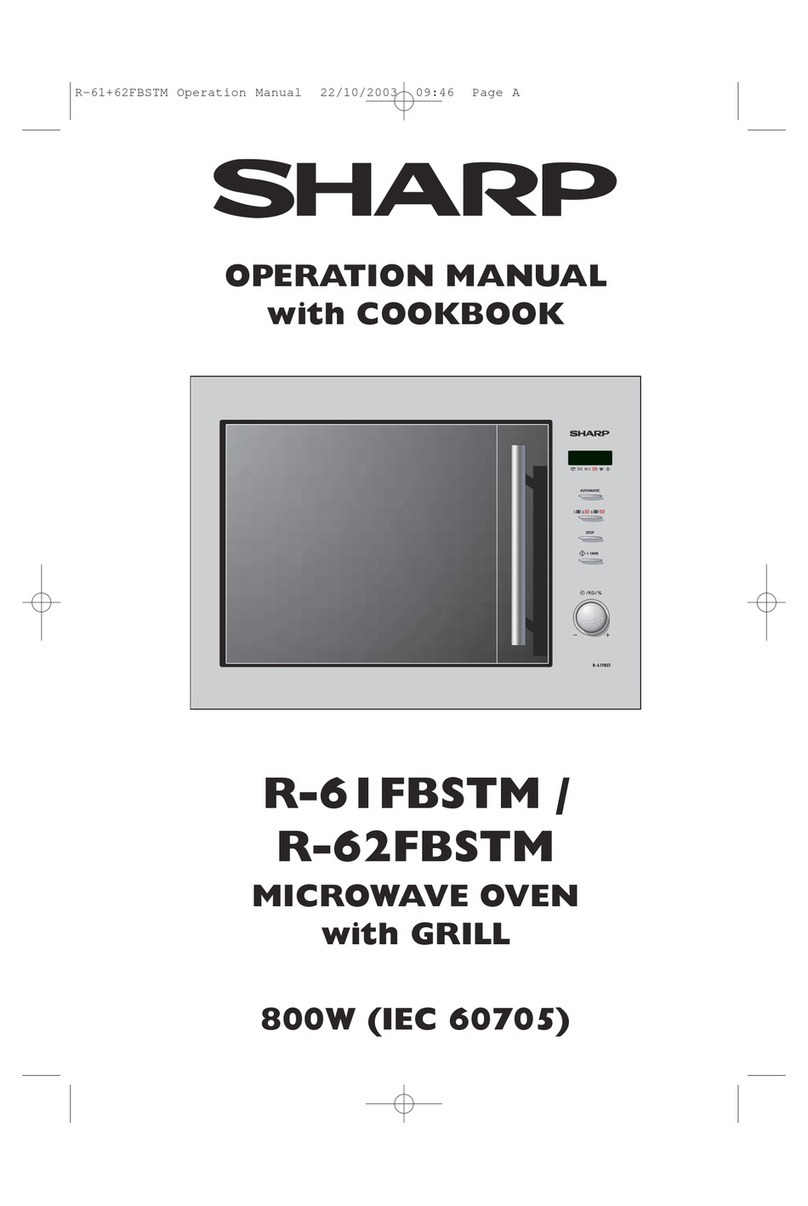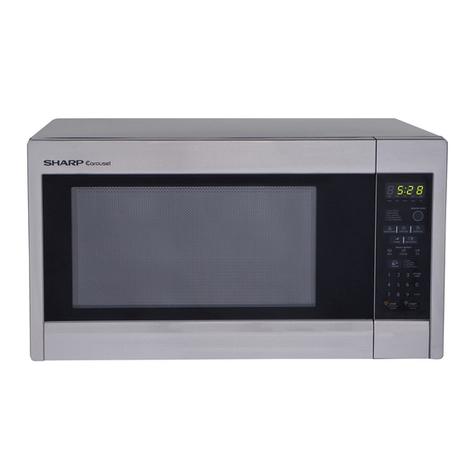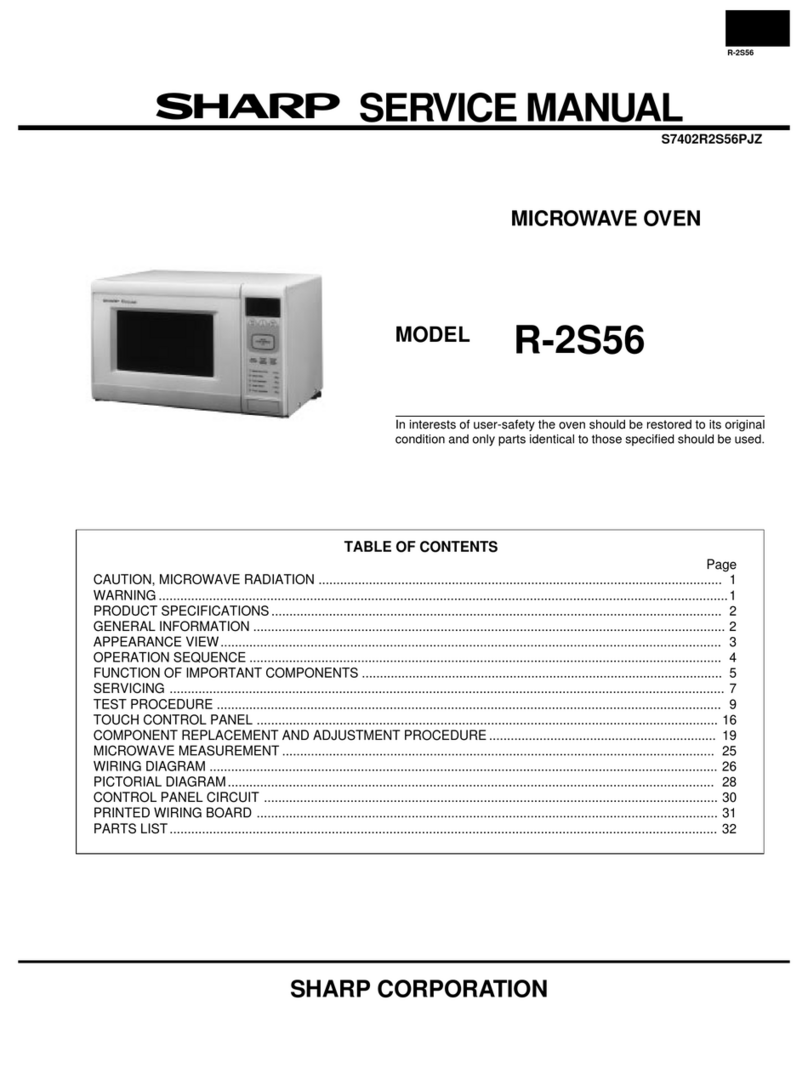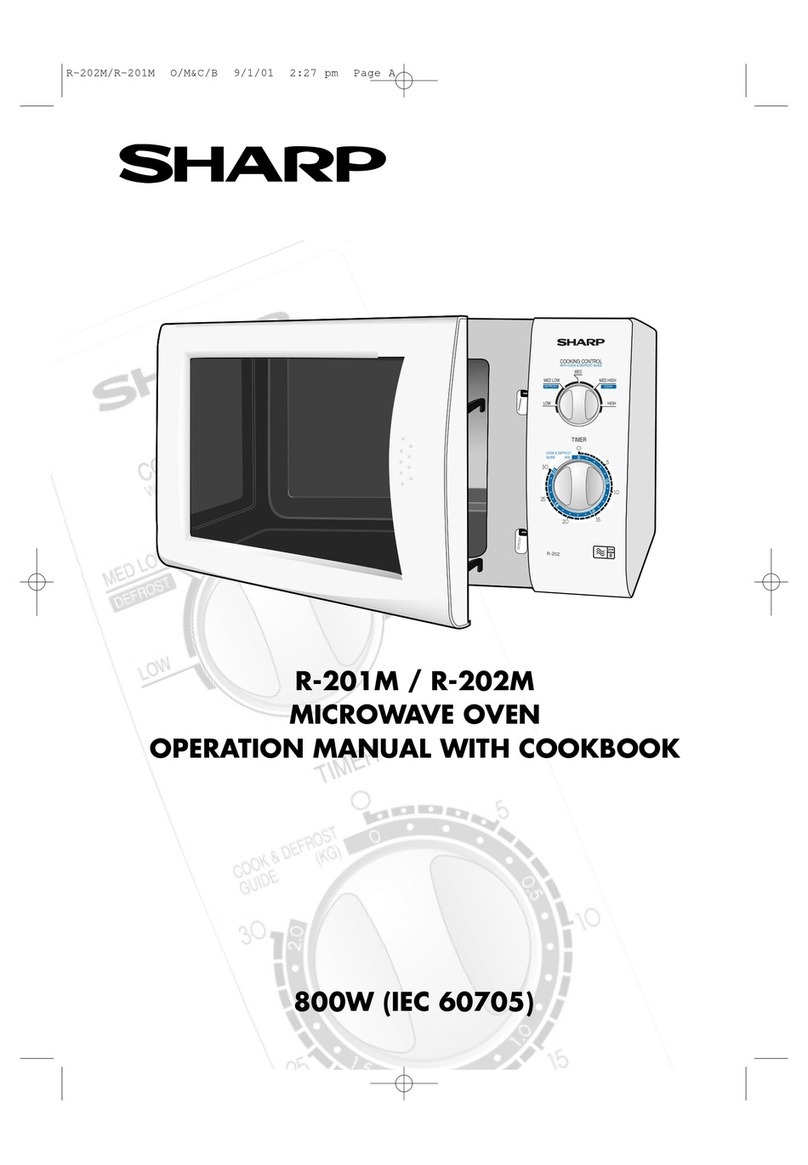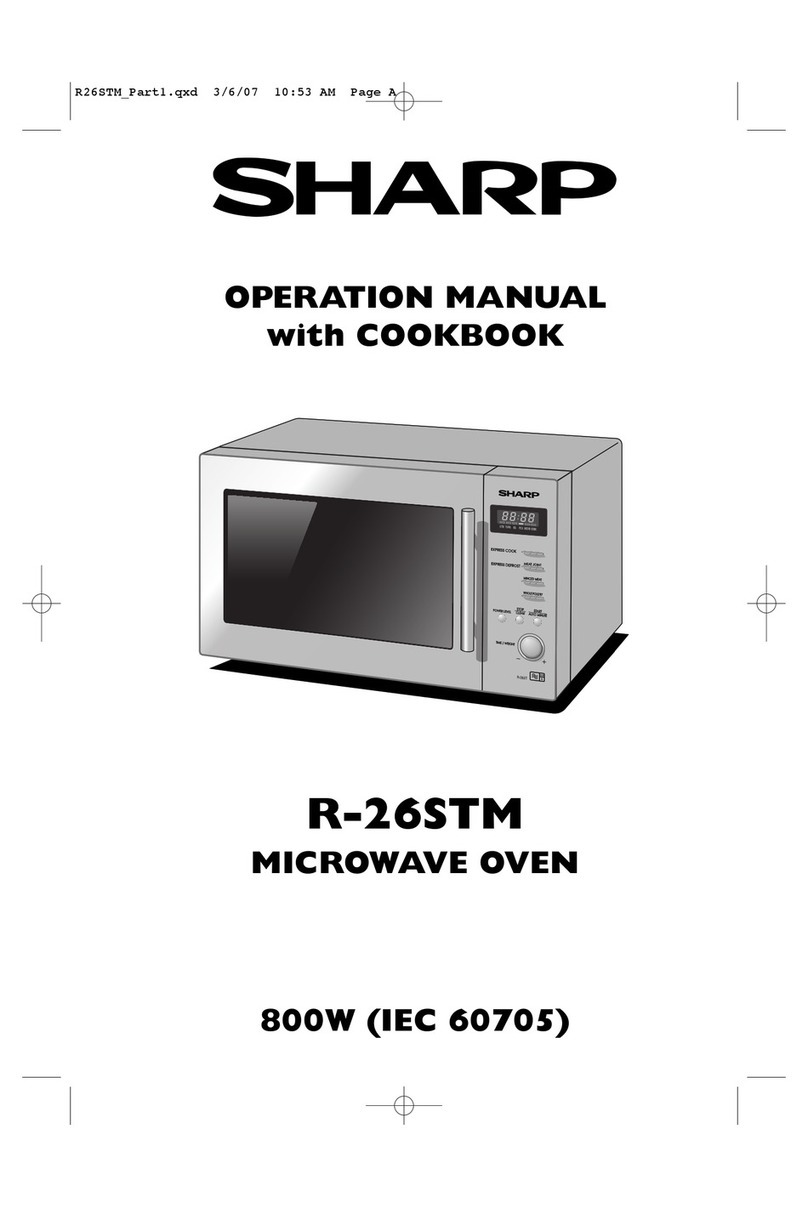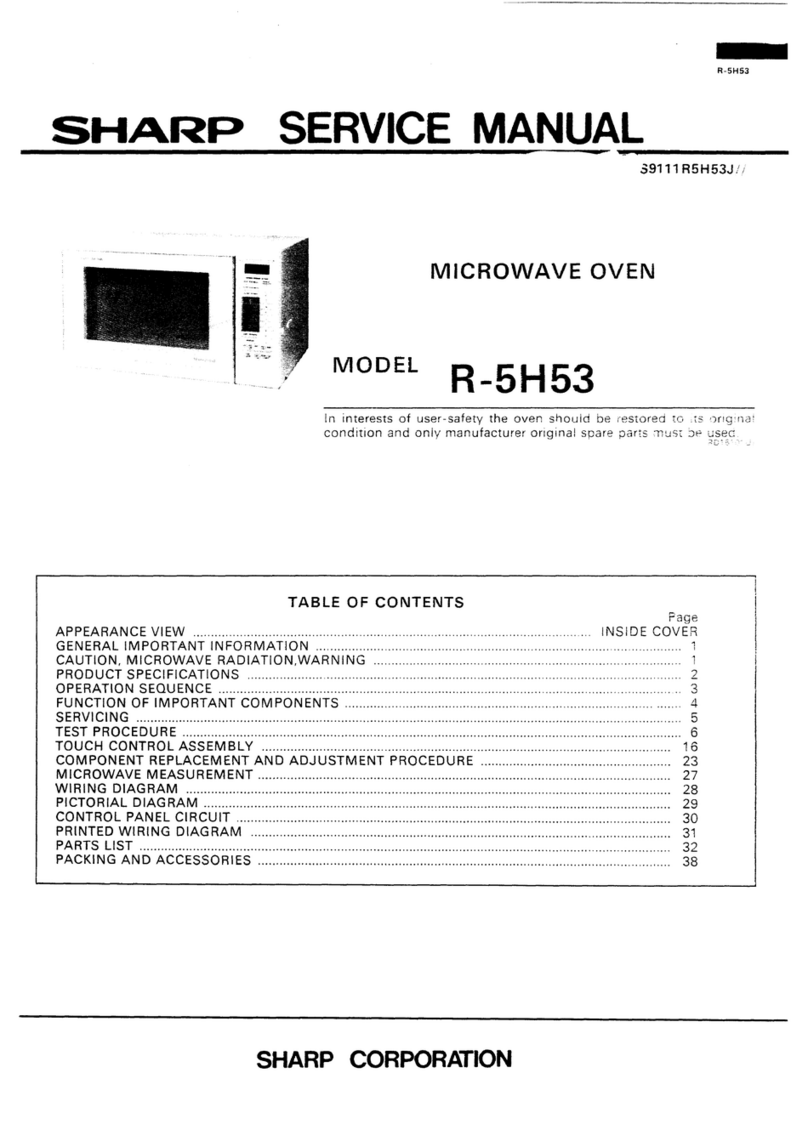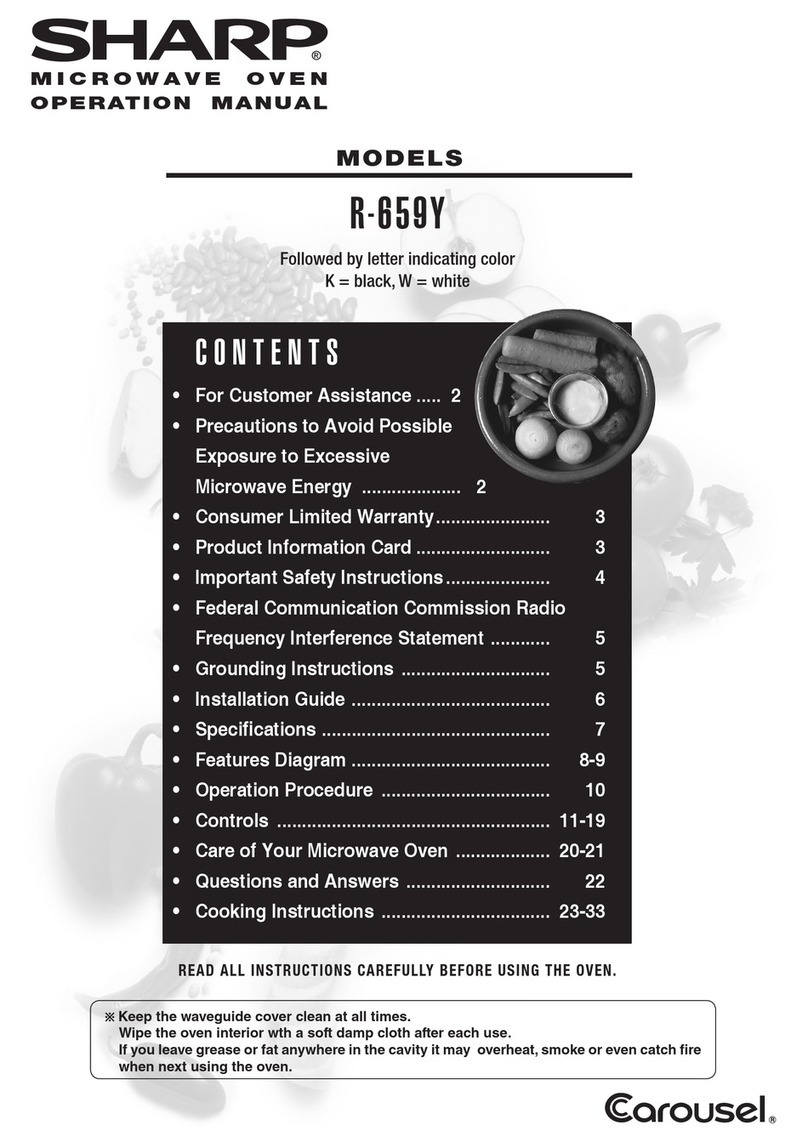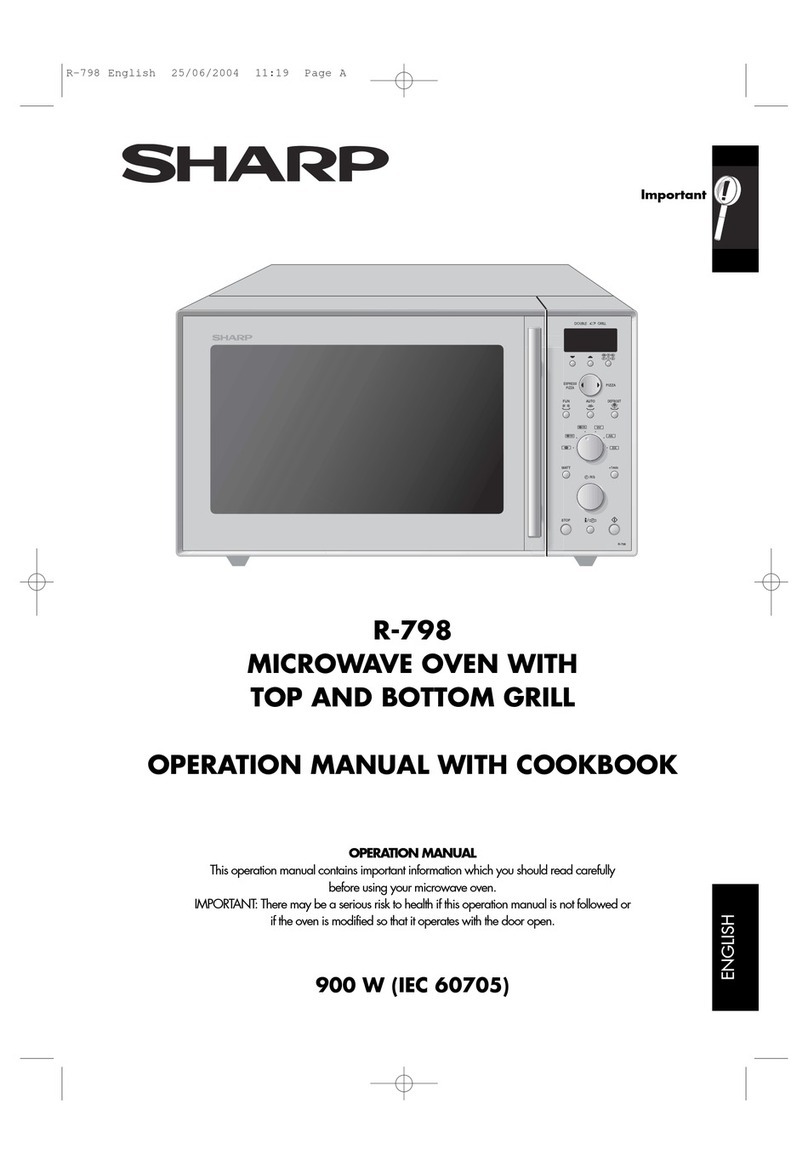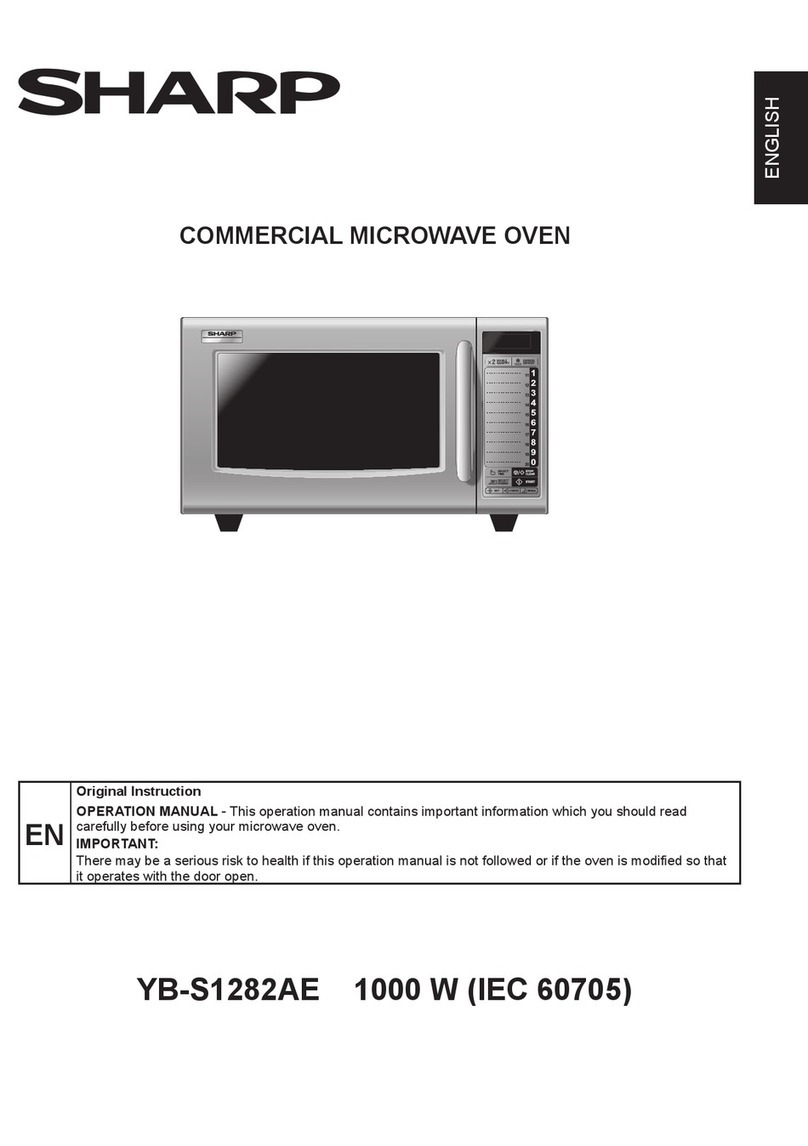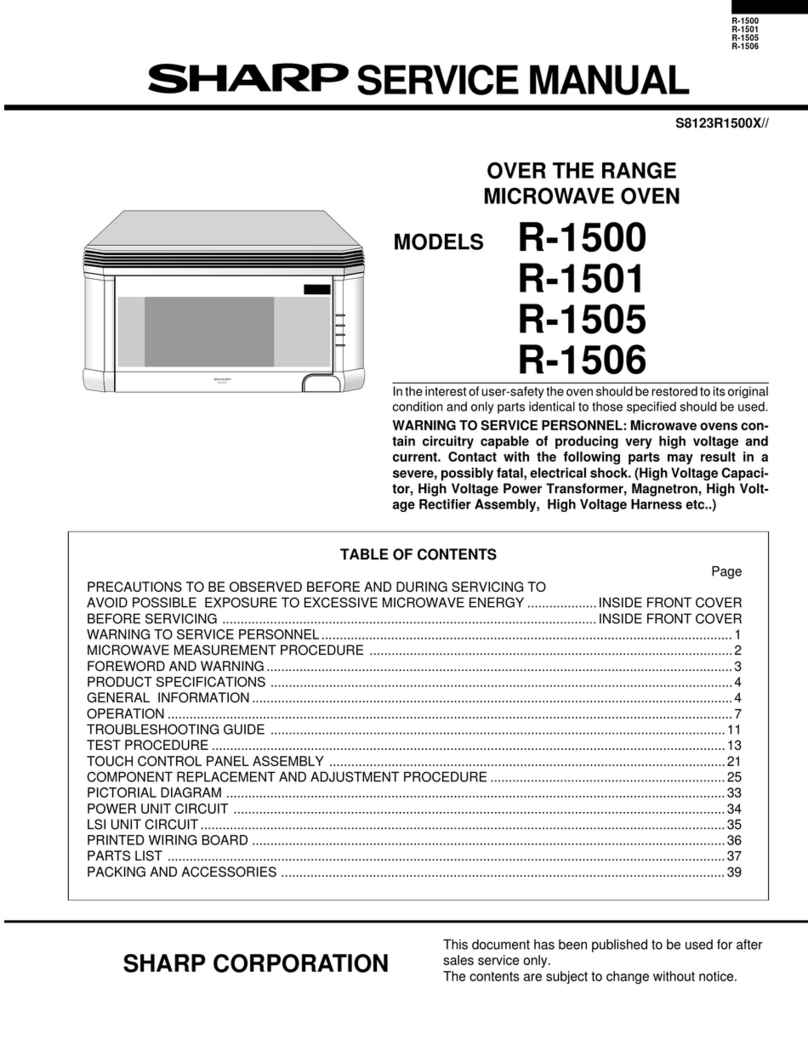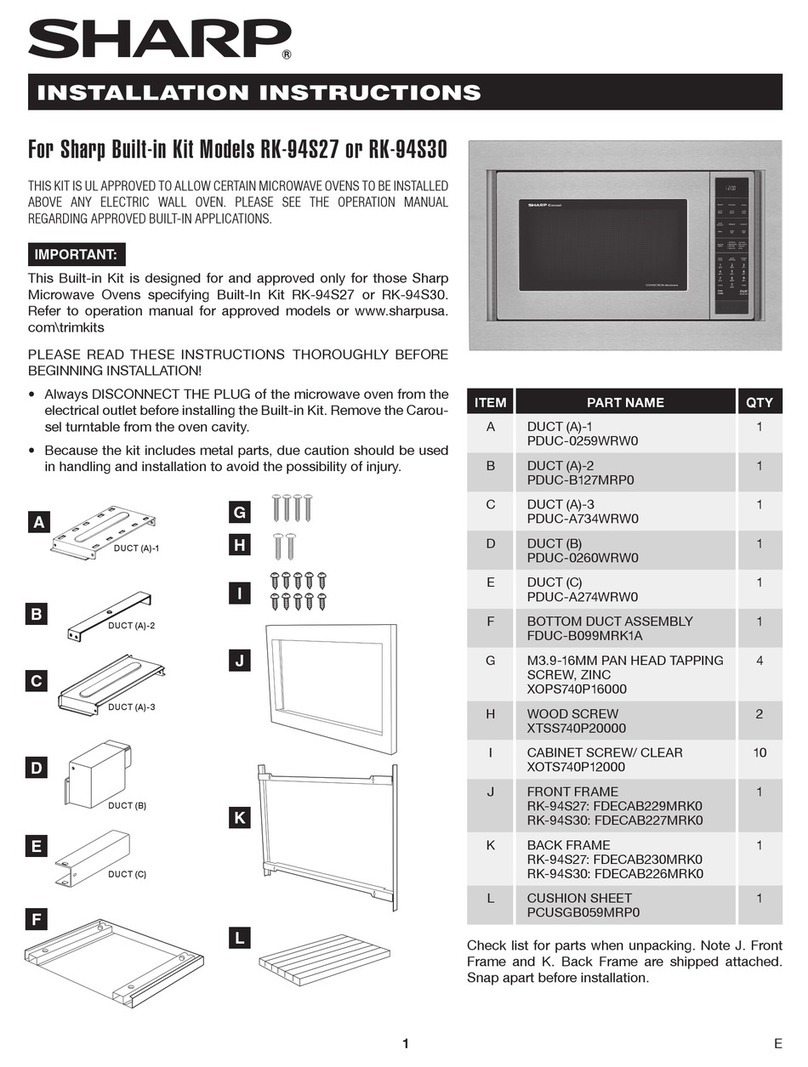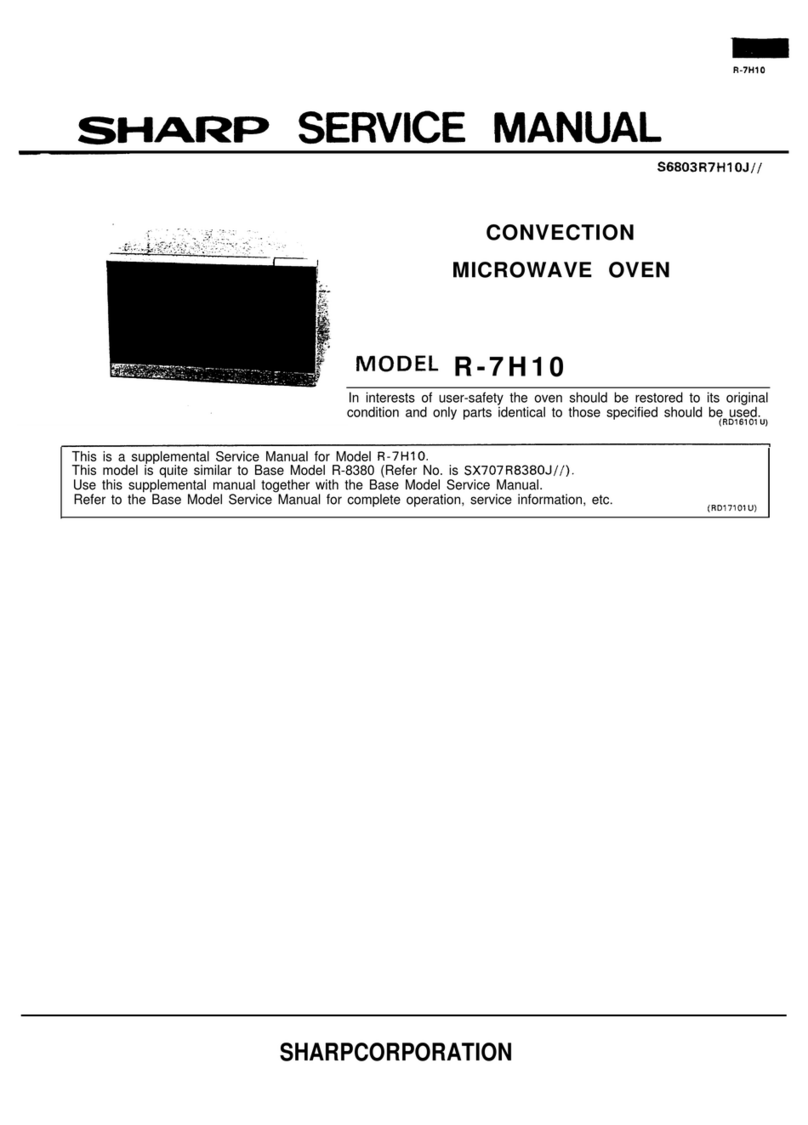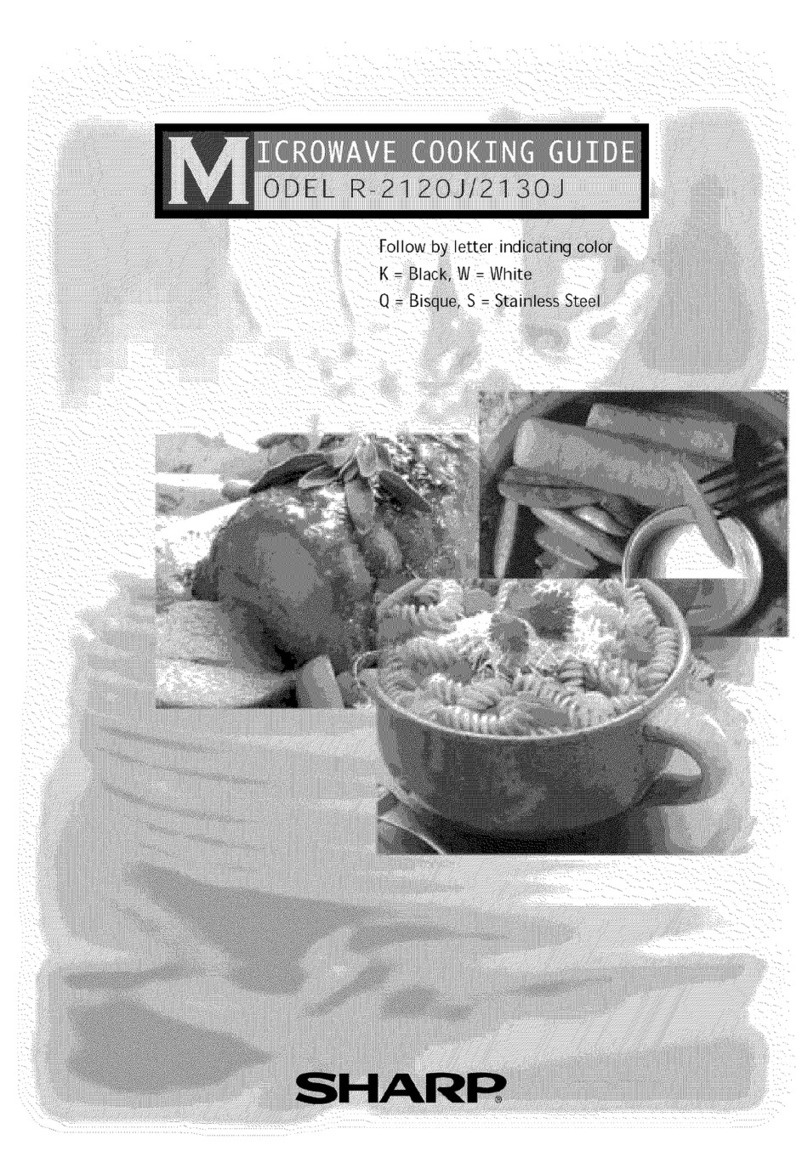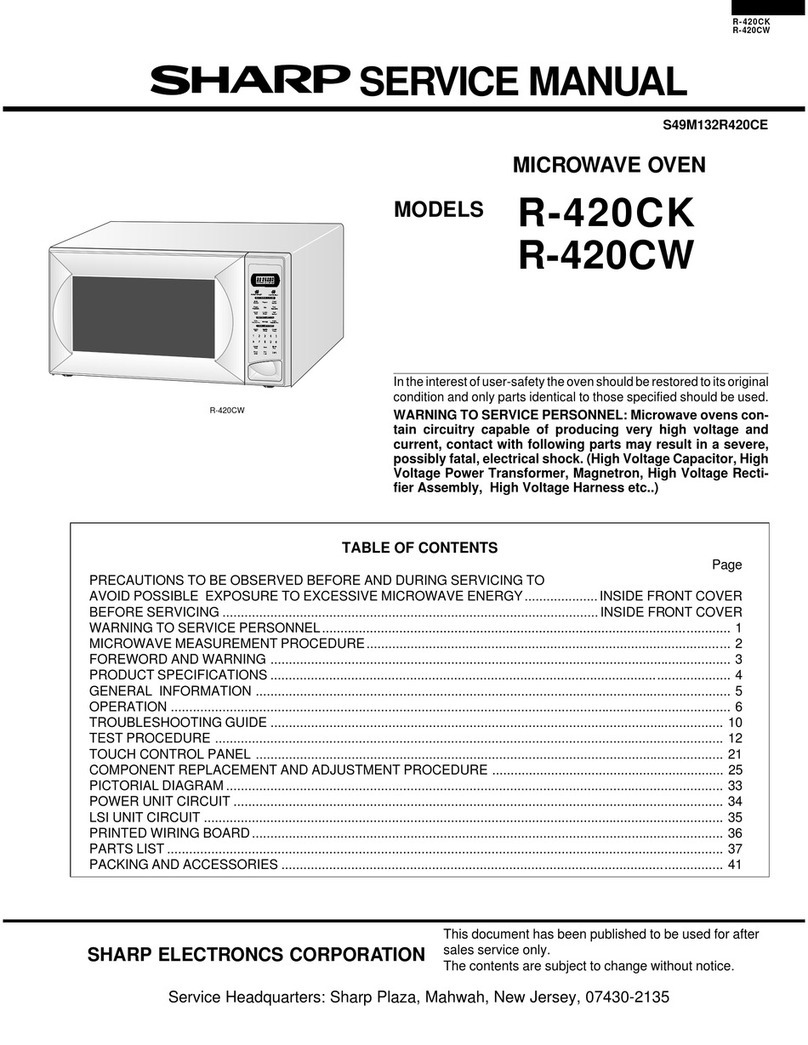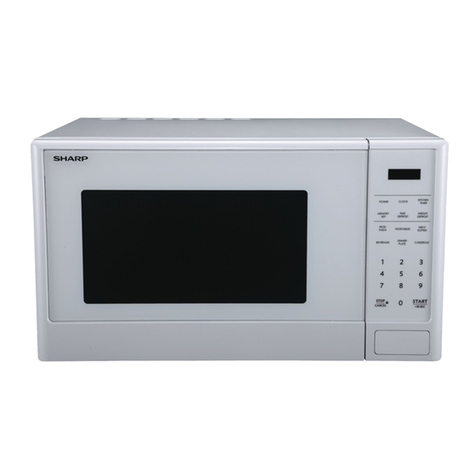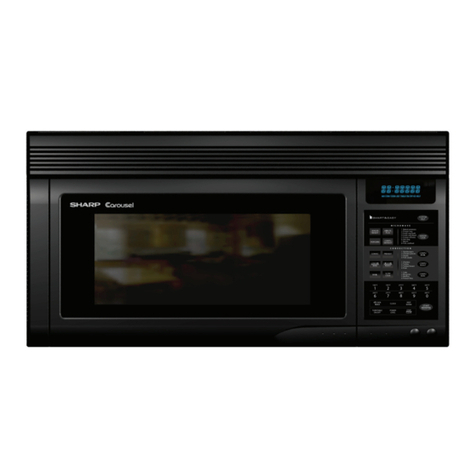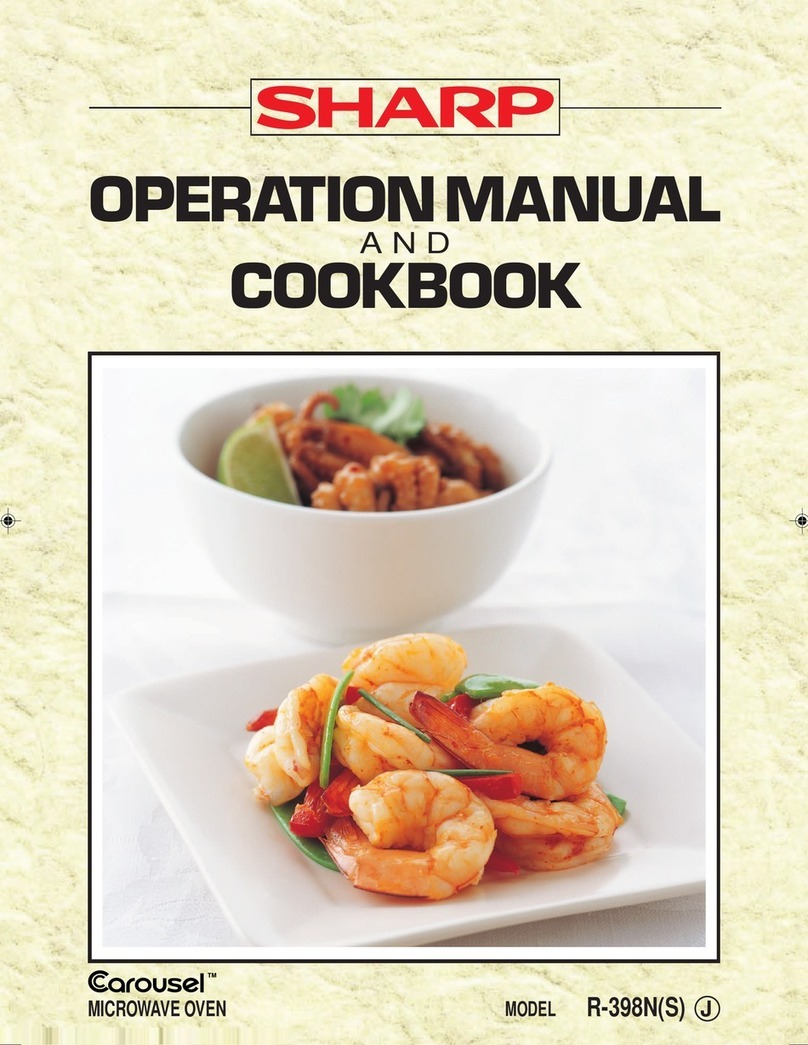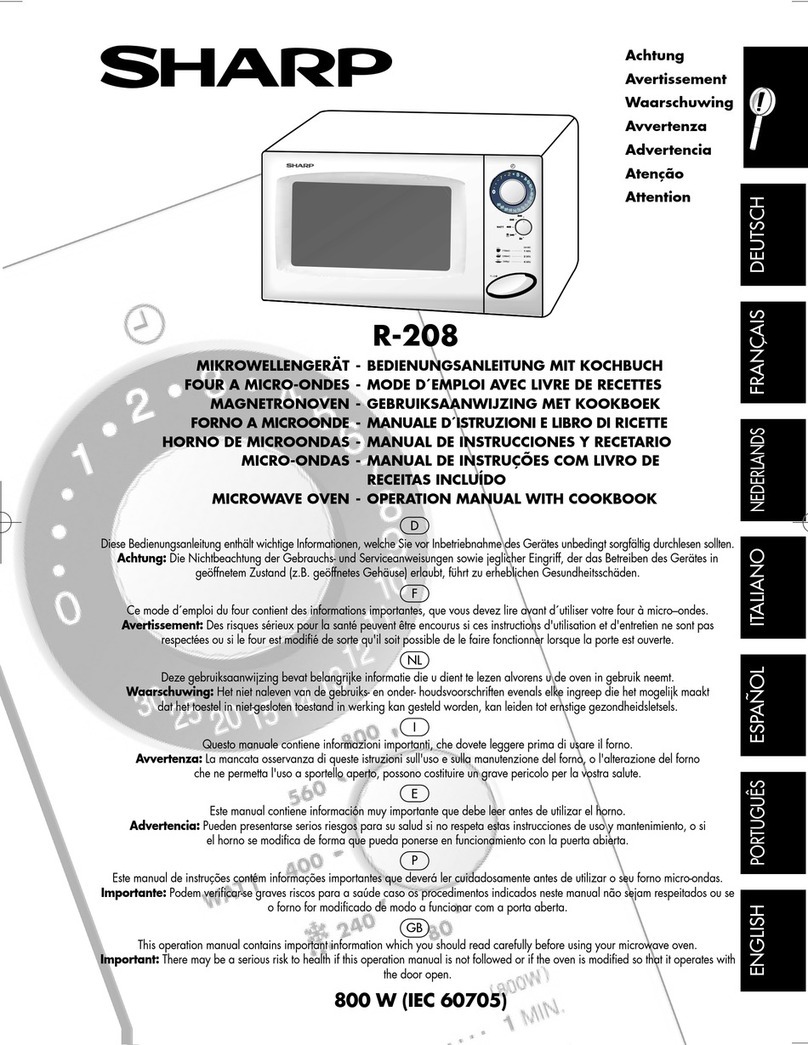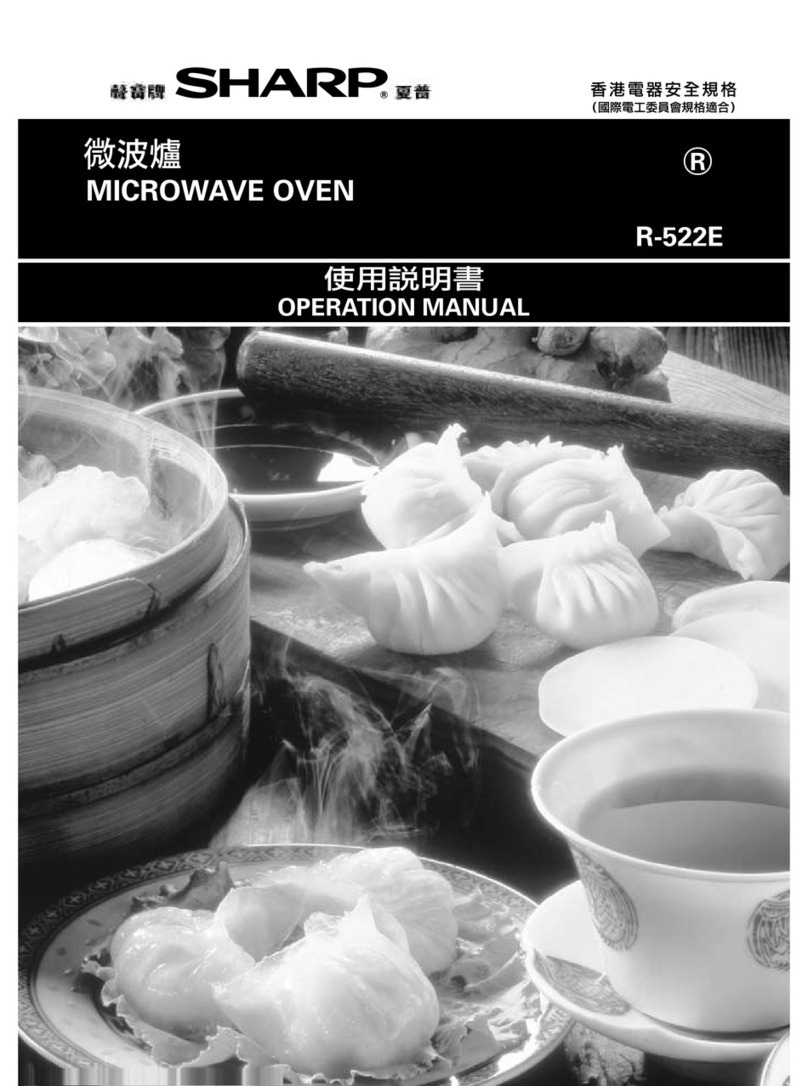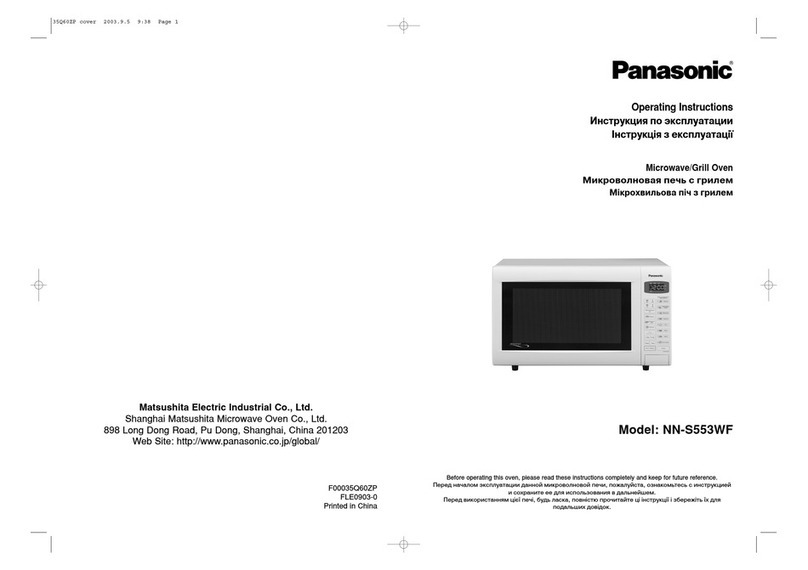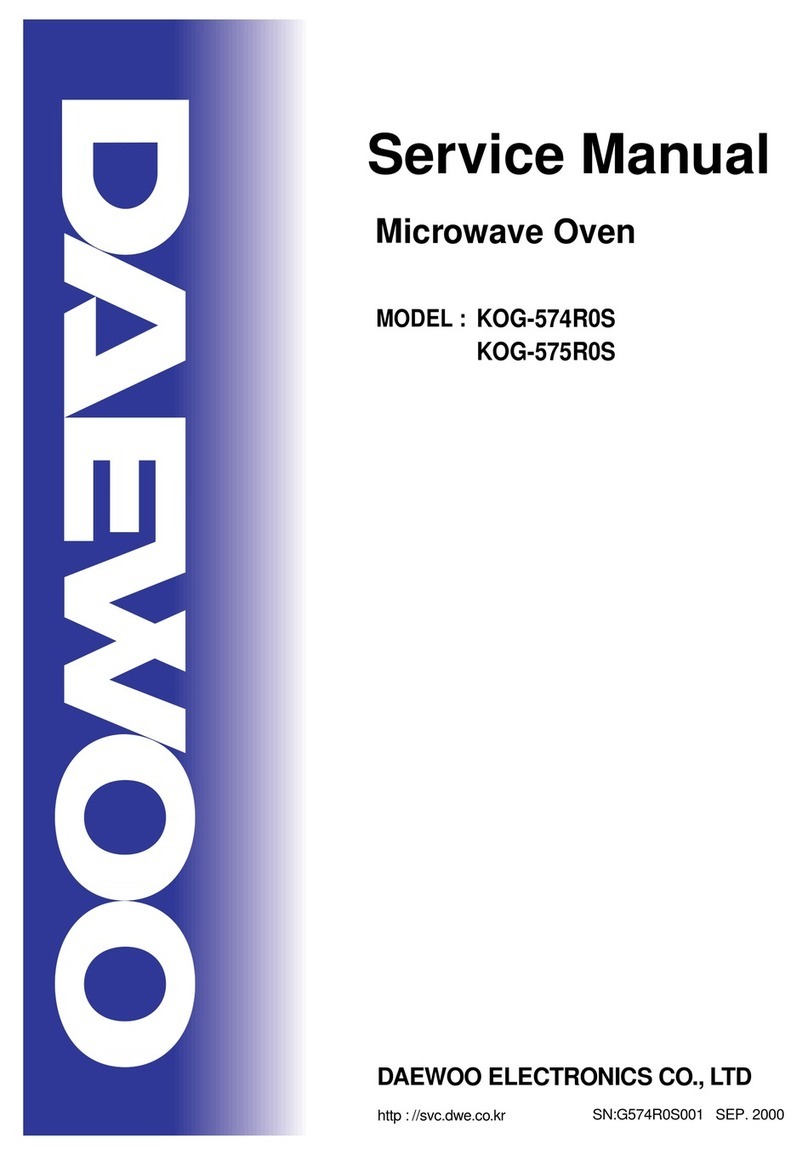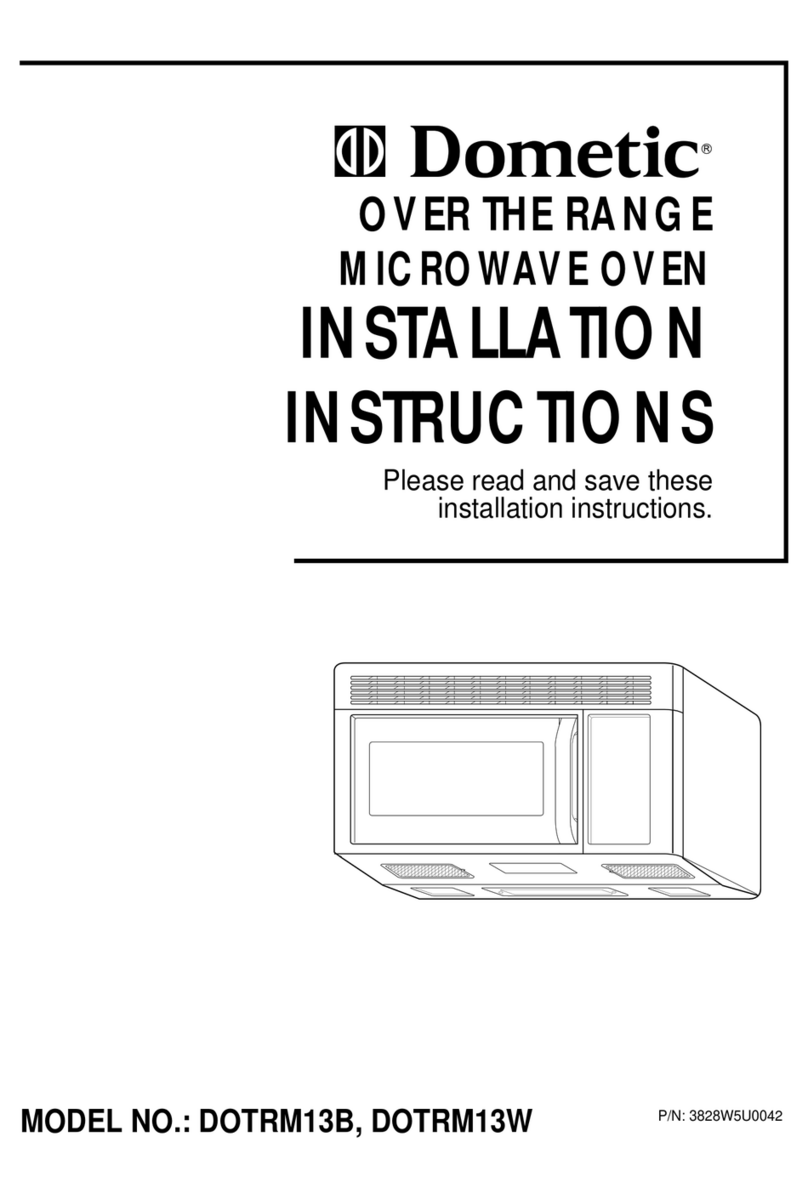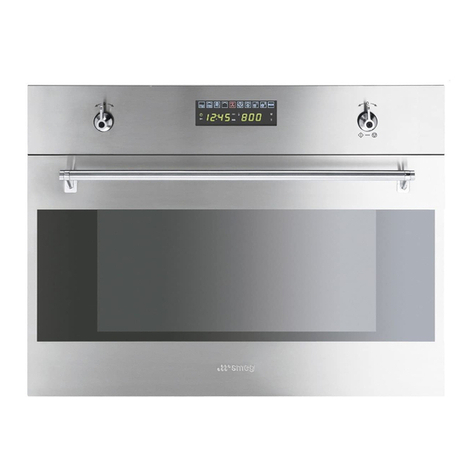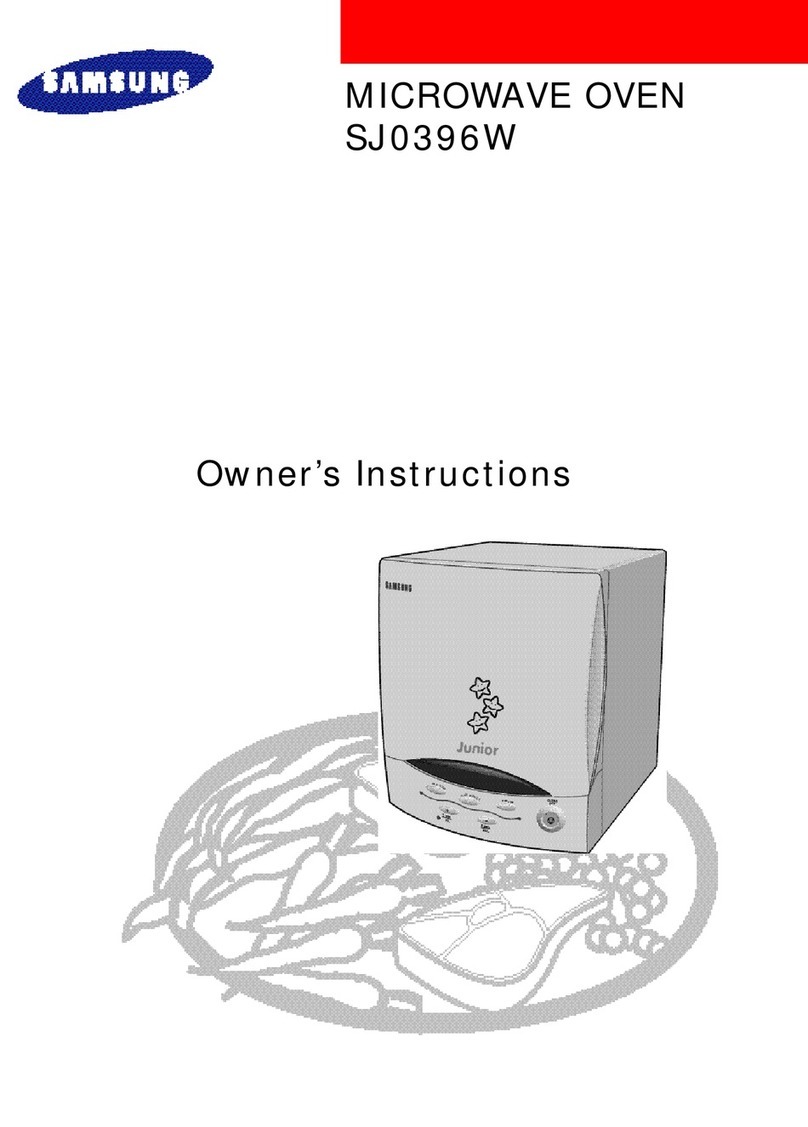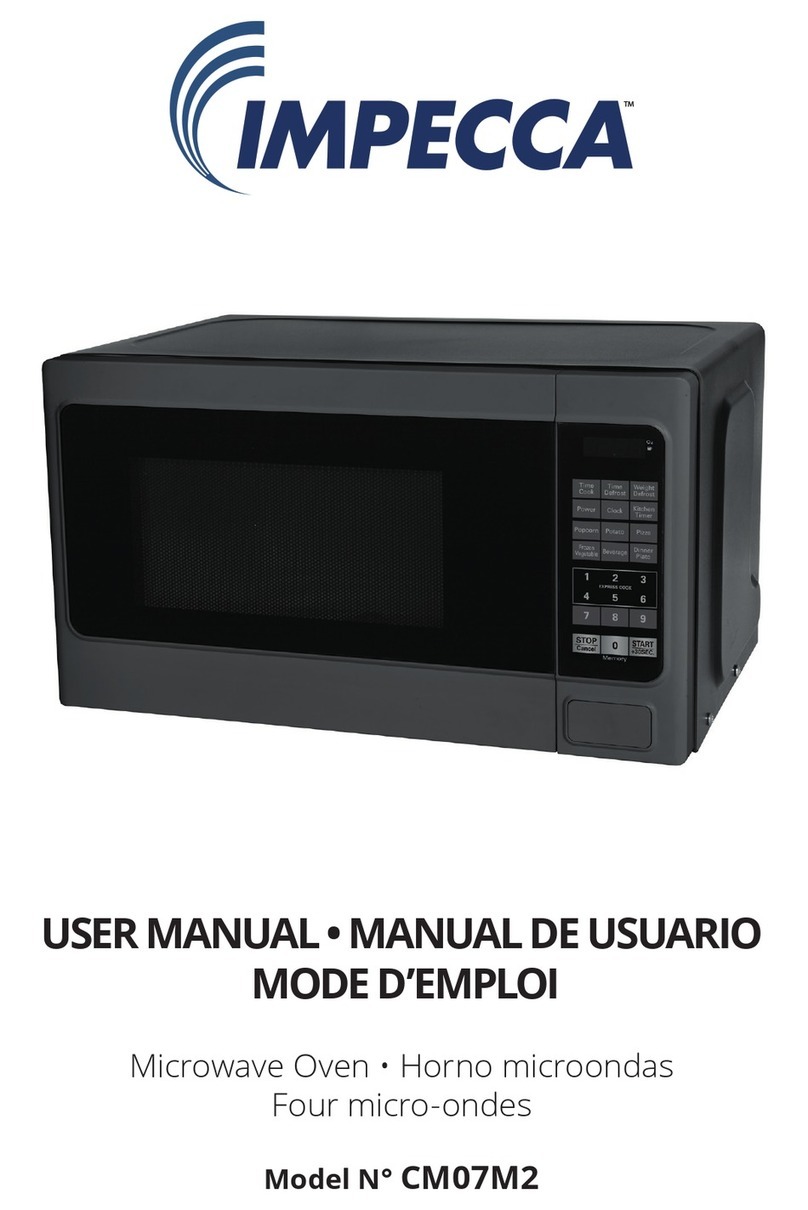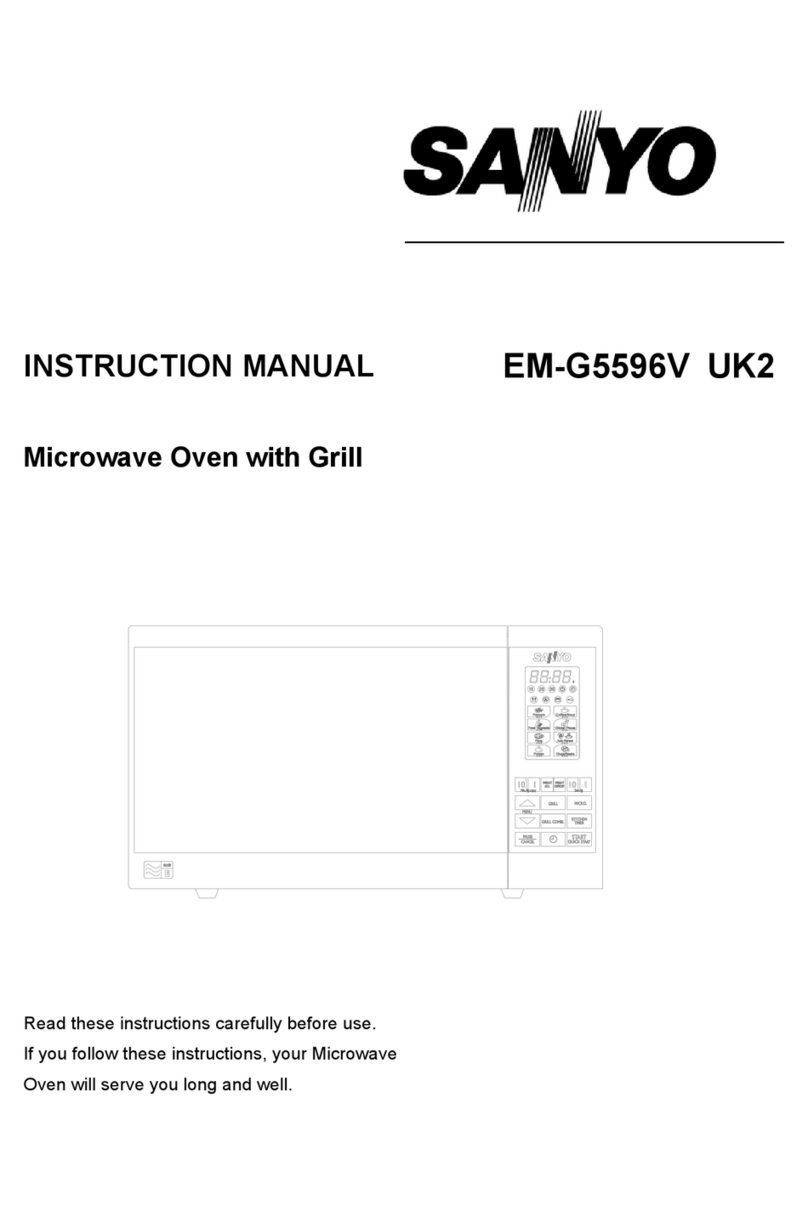i R-SHSS
i
2. The coil of relay (RY4) is energized by the CPU unit.
The damper is moved to the closed position, opening
the damper switch contacts. The opening of the
damper switch contacts sends a signal to the LSI on the
CPU unit de-energizing the relay (RY4) and opening
the circuit to the damper motor.
3. The coil of heater relay (RY3) is energized by the CPU
unit and the main supply voltage is added to the con-
vection heater.
4. When the oven temperature reaches the selected pre-
heat temperature, the following operations occur:
4-1. The heater relay (RY3) is de-energized by the CPU
unit temperature circuit and thermistor, opening the
circuit to the convection heater.
4-2. The oven will continue to function for 15 minutes,
turning the convection heater on and off, as needed
to maintain the selected preheat temperature. The
oven will shut-down completely after 15 minutes.
CONVECTION COOKING CONDITION
When the preheat temperature is reached, a beep signal
will sound indicating that the holding temperature has
been reached in the oven cavity. Open the door and place
the food to be cooked in the oven. Program desired cook-
ing time and convection temperature by touching the num-
ber pad, CONVECTION pad and Temperature pad. When
the START pad is touched, the following operations occur:
1.
2.
3.
4.
5.
The numbers of the digital readout start the count down
to zero.
The oven lamp, turntable motor, cooling fan motor and
convection motor are energized.
Heater relay (RY3) is energized (if the cavity tempera-
ture is lower than the selected temperature) and the
main supply voltage is applied to the convection heater
to return to the selected cooking temperature.
Upon completion of the cooking time, the audible signal
will sound, and oven lamp, turntable motor, cooling fan
motor and convection motor are de-energized. At the
end of the convection cycle, if the cavity air temperature
is above 112”C, the circuit to (RY6) will be maintained
(by the thermistor circuit) to continue operation of the
cooling fan motor until the temperature drops below
112”C, at which time the relay will be de-energized,
turning off the fan motor. Relay (RY5) will however,
open as soon as the convection cycle has ended, turn-
ing off the convection fan motor. This will now cool and
allow the damper door to open.
At the end of the convection cook cycle, shut-off relay
(RY4) is energized turning on the damper motor. The
damper is returned to the open position, closing the
damper switch contacts which send a signal to the
control unit, de-energizing shut-off relay (RY4).
AUTOMATIC MIX COOKING CONDITION
Program desired cooking time and temperature by touch-
ing the number pads and the LOW Ml or HIGH MIX pad.
When the START pad is touched, the following operations
occur:
1. The numbers of the digital readout start the count down
to zero.
2. The shut-off relay (RYl+RYS+RYG) energized, turning
on the oven lamp, turntable motor, cooling fan motor
and convection motor.
3. The shut-off relay (RY4) is energized.
The damper door is closed from the open position.
4. The heater relay (RY3) is energized, adding the mains
supply voltage to the convection heater.
5. Now, the oven is in the convection cooking condition,
6. When the oven temperature reaches the selected tem-
perature, the following operations occur:
6-l. The power supply voltages is added to the convection
heater and power transformer alternately.
6-2. The convection heater operates through the heater
relay (RY3) contacts and the power transformer oper-
ates through the cook relay (RY2) contacts.
6-3. These are operated by the CPU unit to supply alter-
nately within a 32 second time base, convection heat
and microwave energy.
The relationship between the convection and microwave
power operations are as follows.
Note: The ON and OFF time ratio does not correspond
with the percentage of microwave power, because
approx. 2 seconds are needed for heating of the
magnetron filament.
16SEC: 26 SEC
MICROWAVE POWER
I APPROX 10%
(CONVEC ) CONVECTION
TEMPERATLIE
-1BOC
LOW MIX
BAKE
, 1PSEC a 20 SEC
MICROWAVE POWER
.APPROX 30%
(CONVEC )
iON
CONVECTION
TEMPERATUE
-200C
HIGH MIX
Note: During alternate Microwmonvection operation,
the convection heater is energized only if the cavity
temperature drops below the set temperature.
ABSOLUTE HUMIDITY SENSOR (AH SENSOR)
COOKING CONDITION
In case where the AH sensor is used (REHEAT SENSOR
or SENSOR INSTANT ACTION), the foods are cooked in
microwave cooking mode without figuring time, power
level or quantity. When the oven senses enough steam
from the food, it relays the information to its microproces-
sor which will calculate the remaining cooking time and
power level needed for best results.
When the food is cooked, water vapor is developed. The
sensor “senses” the vapor and its. resistance increases
gradually. When the resistance reaches the value set ac-
cording to the menu, supplementary cooking is started.
The time of supplementary cooking is determined by ex-
periment with each food category and inputted into the LSI.
1
I!
I
]
I
/
I
I
5
i
i
/
t
1
!
8
j
I
i
i
/
5

